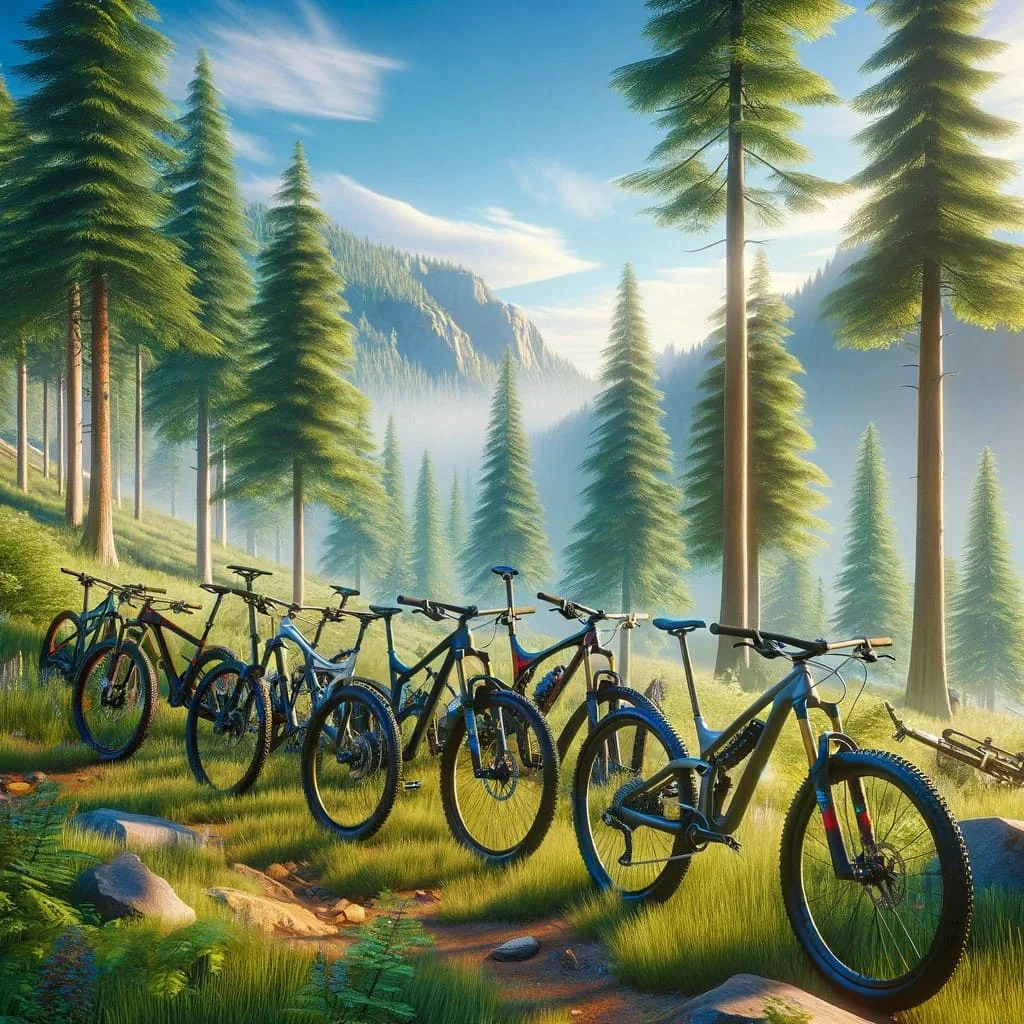Mountain Bikes: The Thrill of Off-Road Biking: Mountain biking represents not just a sport, but a distinct lifestyle that combines fitness, adventure, and a connection with nature. This 500-word article delves into the world of mountain bikes, exploring their design, types, and the exhilarating experience they offer.
Design and Features
The essence of a mountain bike lies in its robust design. Unlike standard road bikes, mountain bikes are built to withstand rough terrain. They feature sturdy frames, often made of lightweight materials like aluminum or carbon fiber to balance durability with ease of handling. The tires are broader with aggressive tread patterns, ensuring better grip and stability on uneven trails.
Suspension is another critical aspect. There are mainly two types: hardtail, with suspension in the front, and full suspension, which adds rear suspension. Full suspension bikes offer more comfort and control, especially on more challenging trails, but they can be heavier and more expensive.
Types of Mountain Bikes
Mountain bikes are classified based on the type of terrain they are designed for:
- Cross Country (XC) Bikes: These are designed for speed and efficiency, ideal for long distances on varied but not overly rough terrain. They are lighter and usually have less suspension, making them less suitable for aggressive downhill trails.
- Trail Bikes: A versatile option, trail bikes are for riders who enjoy a mix of climbing and descending. They offer a balanced performance with moderate suspension travel.
- All-Mountain/Enduro Bikes: Built for more demanding terrains and steeper descents, these bikes have more suspension travel and are more robust, catering to riders who prefer technical trails and enduro racing.
- Downhill (DH) Bikes: Specifically designed for downhill riding, these bikes have heavy frames and maximum suspension to handle jumps, drops, and rocky terrain. They are not suitable for uphill riding or long distances.
The Riding Experience
Mountain biking is exhilarating. It's about navigating through forests, over rocks and roots, and down steep hills. The thrill lies in the challenge of the terrain and the skill required to master it. It's also a great workout, combining cardiovascular exercise with strength training.
Safety is paramount in mountain biking. Helmets, gloves, and appropriate footwear are essential, and more advanced riders often wear additional protective gear like knee pads and body armor.
Community and Culture
The mountain biking community is diverse and welcoming. There are clubs and groups for all skill levels, and it's a great way to meet people who share a passion for outdoor adventure. Many areas have dedicated mountain bike trails, and the sport is supported by a range of competitions and events.
Conclusion
Mountain biking offers a unique blend of adventure, fitness, and communion with nature. Whether you're a beginner or an experienced rider, there's a mountain bike out there that's perfect for your next off-road adventure. As the sport continues to grow, so does its community, making it an ever-more exciting world to be a part of.
Mountain Bike FAQ: Everything You Need to Know
Mountain biking is a thrilling and challenging sport that attracts enthusiasts from all walks of life. Whether you're a beginner or an experienced rider, there are always questions about this dynamic activity. Here's an FAQ to help guide you through the basics of mountain biking.
1. What is a Mountain Bike?
A mountain bike is a bicycle designed for off-road cycling. It differs from standard road bikes with its sturdy frame, wide tires with deep tread for traction, and various suspension systems to handle rough terrain.
2. What are the Different Types of Mountain Bikes?
- Cross Country (XC) Bikes: Lightweight and fast, ideal for long-distance and uphill riding.
- Trail Bikes: Versatile with moderate suspension, suitable for a variety of terrains.
- All-Mountain/Enduro Bikes: Designed for technical trails and downhill sections.
- Downhill (DH) Bikes: Heavy-duty with maximum suspension for steep and rocky descents.
3. How Do I Choose the Right Mountain Bike?
Consider the type of terrain you'll be riding on most frequently. Cross-country bikes are great for smoother trails and long distances, while downhill bikes are best for steep, rough terrains. Your budget and the bike's weight, frame material, and suspension type are also important factors.
4. What Size Mountain Bike Should I Get?
Mountain bike sizing is crucial for comfort and control. It typically depends on your height and leg inseam. Most bike shops can help you find the right size, and many brands provide size charts.
5. What Gear Do I Need for Mountain Biking?
Essential gear includes a helmet, gloves, and appropriate footwear. Depending on the difficulty of the trail, you might also need knee pads, elbow pads, and a hydration pack.
6. Is Mountain Biking Dangerous?
Like any outdoor sport, mountain biking comes with risks, especially on difficult trails. Wearing appropriate protective gear, choosing trails that match your skill level, and keeping your bike in good condition can reduce the risk of accidents.
7. Can Mountain Biking be a Good Workout?
Absolutely! It's an excellent cardiovascular workout that also strengthens various muscle groups, including legs, core, and arms.
8. How Do I Maintain My Mountain Bike?
Regular maintenance includes cleaning your bike after rides, checking tire pressure, ensuring brakes and gears are functioning properly, and getting professional tune-ups periodically.
9. Where Can I Go Mountain Biking?
Look for local trails or mountain bike parks. Websites and apps like Trailforks and MTB Project can help you find trails near you.
10. How Do I Get Started in Mountain Biking?
Start with a beginner-friendly bike and trails. Consider joining a local club or group to learn from experienced riders. Most importantly, ride at your own pace and enjoy the experience.


